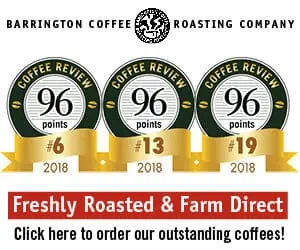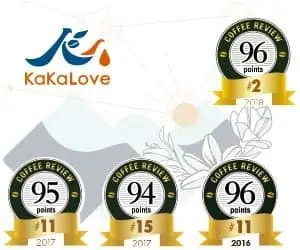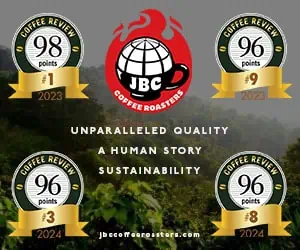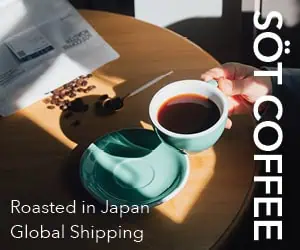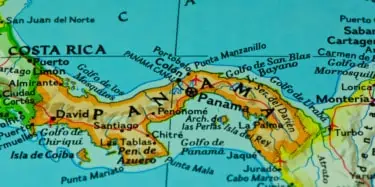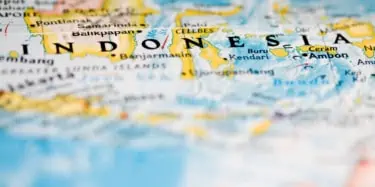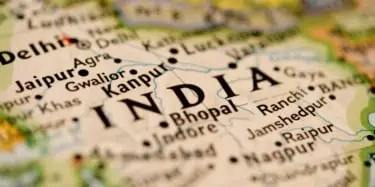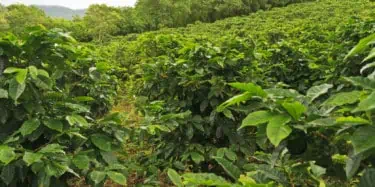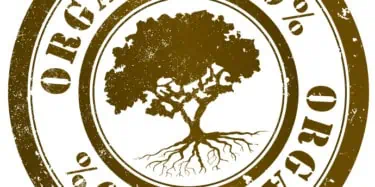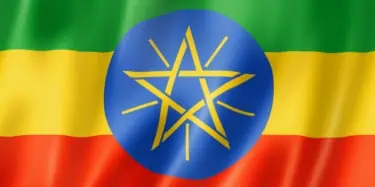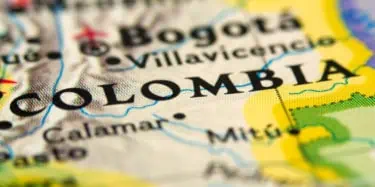The upside of blending coffees is the possibility of creating a coffee with more range and complexity than can be displayed by a coffee from a single crop or origin. The downside is the potential loss of idiosyncrasy or distinctiveness, the danger of creating a boring muddle rather than a complex symphony. Although only one of the twelve blends reviewed here struck me as a full-on symphonic
The 2001 Panama Cupping Event
Most Panama specialty coffees are grown on medium-sized farms on the Pacific-facing slopes of 11,450-foot Volcan Baru, Panama's highest point. Wrinkled by coffee-friendly valleys, Baru rises gently but massively at Panama's western border with Costa Rica. Most of these farms are concentrated in the Boquete Valley on the southeastern side of the volcano. A few are scattered to the west, toward the
Sulawesi Coffees, a Cup on the Wild Side
The finest traditional coffees Sulawesi and Sumatra can be a provocative pleasure but finding a good Sulawesi or Sumatra is a true test of a coffee buyer's taste and persistence. The eight traditionally processed Sulawesis reviewed here were bought by the right buyers for the right reasons. They are a splendid set of coffees, working shifting, always surprising variations on the general Sulawesi
Indian Coffees
India is an attractive coffee origin on several counts. India coffees all are grown in shade, often two tiers of shade, and are frequently intercropped with spices, particularly cardamom, clove, cinnamon and nutmeg. Indias often pick up intriguing aromatics from these crops, probably from having been stored and handled around them. The large farms or estates on which India coffees are grown are
Low Acid Coffees
Acidity is a term used in at least three overlapping ways in the world of specialty coffee. For the coffee aficionado, acidity is the dry, bright sensation that distinguishes fine high-grown coffees from duller, low-grown coffees. For these sophisticates, the brighter and more acidy a coffee the better. But for many other coffee drinkers, acidity is a word for an upset tummy and an unpleasant
Fair-Trade Coffees
Big Problem, Controversial Solution This is a big, stubborn problem, which at the moment is addressed by a few small, tentative solutions. Fair-trade coffee, the subject of this month's cupping, is one of these hopeful solutions, a relatively new one that has provoked some controversy among coffee professionals. To simplify, the fair-trade movement determines a formula for a "fair" price for
Classic Espresso Blends
In an American context, a classic espresso blend is one that achieves the heavy body and natural sweetness required of espresso brewing by skillful combining of naturally sweet, full-bodied coffees, rather than by trying to subdue acidy coffees through aggressive dark roasting. In these terms, all nine of the blends in this month's espresso tasting can be said to honorably aspire to the
Prize-Winning Panamas
Soft and sweet? Or bland and flat? Balanced versus boring? Subtle versus inconsequential? Imagine similar sets of adjectives, and you have the delicate inner struggle that characterized this month's cupping of current-crop coffees from Panama. Panama is a rising star, an up-and-coming contender, among Central America coffee origins. All premium Panama coffees are produced on large family-owned
Central America Coffees
Again and again while writing the reviews of this splendid assortment of Central America coffees I found myself attempting to characterize the classic American cup, the cup that American supermarket blends aspire to, but never come close to fulfilling. It is a dry, bright, acidy cup, yet sweet and round, transparently free of earth or ferment, yet alive with high-toned, subtle nuance: nut and
The Mocha Taste
The eleven coffees the Coffee Review panel cupped this past month represent the essence of coffee romance and history. They are representatives of the world's original coffees, quite literally embodying history in the cup. Ethiopia is the botanical home of the coffee arabica tree, and Yemen, just across the Red Sea from Ethiopia at the southern tip of the Arabian peninsula, is where the tree was
Organically Grown Coffees
"Organics," as insiders call them, are coffees certified by international agencies as grown, transported, stored and roasted without contact with pesticides, herbicides, fungicides, artificial fertilizers or other purported multisyllabic villains. They offer aficionados an impeccable way of both looking after their own health as well as the health of the planet and its people. Not only are
Decaffeinated Coffees
The last time I wrote on decaffeinated coffees I said drinking them was like listening to good music through cheap speakers. The analogy still stands. No matter what the decaffeination method or how careful the decaffeination procedure, coffee loses something more than the (tasteless) caffeine during the rather brutal process of removing it. Or the coffee changes in unexpected ways. The San
1999 Papua New Guineas, Timors, and a Lone Java
An assortment of intrigues and questions animate this month's panel cupping of coffees from the eastern islands of the Malay Archipelago: Papua New Guinea, Timor, and Java. Among those questions and intrigues: Papua New Guinea estate-grown coffees are among the up-and-coming challengers in the world of fine coffee. How good are the best estate-grown Papua New Guineas? Can they match the drama
Supermarket Coffees
Twenty years ago the line was clear between specialty coffees and "commercial" coffees. Specialty coffees were sold whole-bean, freshly roasted, in stores that offered their customers a wide range of choice in roast style and origin. Commercial coffees were represented by the almost identical contents of cans lined up like fat little percolator-ready soldiers on supermarket shelves. Obviously,
Coffees of the Millennium
Coffees of the millennium may sound grandiose (what's next, skateboards of the millennium?), but the more I considered the idea the more persuasive and interesting it became. After all, coffee's profound appeal to the human palate and nervous system literally helped constitute the modern world. As one of the world's most actively traded commodities (second in value behind oil), coffee has been a
Holiday Coffees
The word holiday attached to a coffee presumes one of two related functions: Either you drink it at your celebrations or give it to someone else to drink at their celebrations. Roasted coffee is not something you save for next year. Coffee is an existentially authentic gift; it lives in the now. The eleven coffees sent to us by eight roasters fall into two further categories: special
Wet-Processed Ethiopia Coffees
An interesting trivia question to ask people is where coffee originated. Virtually everyone looks confused, and, when pressed, usually tries a Latin-American country: Colombia, say, or Brazil. Of course, Coffee arabica, the species that produces all fine coffees, originated in the highland forests of Ethiopia, in the Horn of Africa. The arabica tree, which still grows wild in the middle tier of
Single-Store Roasters
Specialty coffee started with a single-store roaster. Or maybe three or four. Alfred Peet's famous Vine Street store in Berkeley had a little Royal roaster in back of the counter when I first visited it in 1970, the pipe rising precariously (and crookedly, if I remember rightly) toward the high ceiling. Across the Bay in San Francisco Freed Teller & Freed had been roasting in the back room of
Colombia Coffees
Colombia is the paradox of specialty coffee. Its 100% Colombia campaign, initiated decades ago and still rolling, is a model of successful coffee organization, institutional persistence, and savvy marketing. Colombia remains the world's only premium single origin able to compete successfully in the world of commercial roast-and-ground canned coffee. And the Colombia Federation of Coffee Growers is
New Crop Guatemala Coffees
Guatemala is rivaled only by Kenya as coffee insiders' favorite origin. The terrible ravages of decades of brutal civil war have ironically helped preserve that position, since those years of disorder discouraged the technification of Guatemala coffee, meaning the replacement of heirloom, shade-grown varieties of Coffea arabica with hybrid, full-sun varieties heavily dependent on chemical



